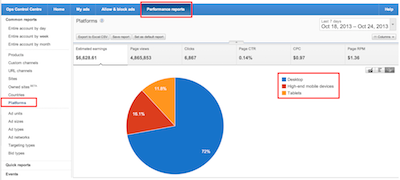Numerous cities have filed for bankruptcy in recent years, and many more cities are on the brink. The reason is untenable union wages, and more importantly untenable pension promises.
Sampling of Bankruptcy News- Vallejo, California March 2009: Judge Rules Vallejo Can Void Union Contracts
- Los Angeles, California January 2010: Mayor of Los Angeles Says "Bankruptcy is Not an Option"
- Vallejo, California March 2009: Vallejo's Inept City Council Blows It
- Central Falls, Rhode Island August 2011: Central Falls Rhode Island Files Chapter 9 Bankruptcy; Court Asked to Negate Collective bargaining Agreements; Vallejo Precedent
- Central Falls, Rhode Island September 2011: Central Falls Set to File Bankruptcy Exit Plan; 50% Pension Reductions, 40% Slash in Police and Fire Budgets Coming Up
- Vallejo, California January 2011: Vallejo Bankruptcy Plan Offers Unsecured Creditors 5-20%; JPMorgan CEO Forecasts More Municipal Bankruptcies; Bernanke Will Not Rescue Cities
- Stockton, California June 2012: Stockton CA Bankrupt; Unions (Not Housing Bust) Primarily to Blame; Pension Death Trap for Cities; What's the Solution?
- Stockton, California June 2012: Wells Fargo Seizes Stockton California City Hall, Parking Garages; City Prepares Bankruptcy Contingency Plans; Bondholder Mediation Underway
- Scranton, Pennsylvania July 2012: Scranton Mayor Slashes All Public Worker Wages to $7.25 per Hour, Including Police, Fire, His Own; City Effectively Bankrupt
- San Bernadino, California August 2012: San Bernardino Files Chapter 9 Bankruptcy Petition; Pension and Medical Liabilities Impossible to Meet
- Atwater, California September 2012: California Hit Parade Rolls On: Atwater Scrambles to Avoid bankruptcy
- Stockton, California April 2013: Judge Rules Stockton CA Bankruptcy is Valid, City Acted in Good Faith
- Detroit, Michigan July 2013: Detroit Files Chapter 9 Bankruptcy; Oakland, LA, Others on Deck; Pension Promises vs. Bondholders in Spotlight; The Bright Side
- Vallejo, California October 2013: Vallejo, Mired in Pension Debt Again; Lesson for Stockton and Detroit - Shed Those Pension Obligations Now!
- Desert Hot Springs, California November 2013: Desert Hot Springs, CA Mulls Bankruptcy Due to Soaring Wages and Pensions; The "Only" Option; Just Desserts for CalPERS
- Scranton, Pennsylvania November 2013: Moody's Warns of Scranton Bankruptcy; Fitch Downgrades Chicago Citing Pension Problems; Liberal Fantasyland
- Scranton, Pennsylvania November 2013: Scranton Unlikely to Make Required Pension Contribution; Mish Proposal: Offer the Union 35 Cents On the Dollar
- Chicago, Illinois November 2013: Retirement for Chicago Park District Employees, With Full Benefits: Age 58; Reflections on Chicago's Second Triple-Notch Bond Downgrade in Six Months
What Went Wrong?Those are not isolated incidents. I have written about Oakland, Houston, Baltimore, Harrisburg, and numerous other cities. Unions are behind the demise of every one of those cities.
Union coercion (public and private), vote buying, and inept city management in settling wage and pension disputes ruined every one of the above cities. Dozens more cities are on deck.
Detroit was obviously bankrupt ten years ago, and would be far better off had it declared bankruptcy ten years ago, but just did so in July of 2013.
Promises, PromisesUnions keep promoting their head in the sand belief that pensions and wage contracts are sacrosanct. Well they aren't. Take a look at actual events.
- In 2009, a federal bankruptcy court ruled that Vallejo could cut pensions.
- In Central Falls, Rhode Island, in actual practice, pensions were slashed 50% across the board following bankruptcy.
- In October, the Federal judge overseeing the Detroit bankruptcy came flat out and stated Protecting Detroit pensions may violate bankruptcy code
In an exchange with an attorney representing Detroit's two pension funds, U.S. Bankruptcy Judge Steven Rhodes said U.S. Bankruptcy Code would not afford special protection to pensions because, "It gives a priority to one unsecured creditor or one group of unsecured creditors, over all the others."Read that ruling over and over again until it sinks in. There is only one inescapable conclusion:
Public Union Pensions are NOT Sacrosanct, regardless of what state constitutions stipulate.
Taxpayers can all be thankful that US bankruptcy laws overrule ridiculous state guarantees.
Vallejo Case StudyVallejo, California is an interesting case study. The bankruptcy judge let the city cut pensions. It didn't. And now (just as I predicted in 2010), Vallejo is headed for bankruptcy again.
The lesson for cities is simple, slash pensions when you have the chance (or you will be back in bankruptcy court again).
What Constitutes Fair?A friend of mine pinged me with these thoughts regarding the Chicago pension mess.
The City of Chicago did a dumb thing 20 years ago, but is it really fair to take away a pension from someone who worked 20 years for less money than he could have made in the private sector to get the pension? This is a tricky issue. In the private sector employers default all the time, but the PBGC guarantees a high percentage of benefits. PBGC does not guarantee municipalities.
Second, to the extent that the retirements result in a reduction of force, it could save the City money. Retirement benefits are generally not at full pay and certainly are not subject to upward adjustment for promotions. Early retirement is how the private sector gets rid of deadwood.
My response follows...
Template for Fairness- Most of the time public employees do not get less money than private sector. They actually get more.
- I suspect 58 is retirement age with full benefits. Most police and fire departments are setup that way, with some minimum number of years of service. Regardless, with retirement at age 58 (55 for some police and fire workers) given pension spike rules, many pensioners will make more in retirement than they ever did working. Is that fair, or ridiculous?
- So. is it fair to cut benefits? Yes.
- Cities will careen towards bankruptcy without massive tax hikes, and probably even with them, over benefits.
- Untenable benefits are partly a result of coercions and threats by unions, and partly a result of sweetheart deals by politicians buying votes.
It certainly is not fair to ask taxpayers to pick up the tab, given the threats, coercion, vote buying, and backroom deals under which politicians rewarded their friends and themselves jobs with ridiculous pensions.Fairness Test Needed In bankruptcy court, some judge (as happened in Rhode Island and will happen in Detroit), is going to slash benefits by 50%, perhaps even more.
There will be no
fairness test. Pension reductions will happen, and they will be across the board. Yet, some high-roller pensioners will collect over $150k per year in benefits (even with the reduction), while others with a $25,000 pension will see it cut to $12,000.
That's
fair to the taxpayer, but arguably not fair to those on the bottom rung. And that is the likely result in absence of a negotiated settlement.
Negotiated SettlementsThe
fairest possible thing to do is sit down at the table and negotiate a settlement.
I suggest, those with the least pension benefits get the smallest cuts, and those with the most benefits get the biggest cuts.
Indeed, if unions were smart, the majority could come to negotiated terms with a starting point along the lines of
- No cuts in benefits for the bottom 30%
- Small cuts in benefits for the next 30%
- Big cuts in benefits for the top 40%, on a sliding scale
Such a negotiated settlement would be the fairest thing for everyone, pensioners and taxpayers alike.
However, my starting point may not be possible. When pension plans are exceptionally low-funded, even those on the bottom rung may need to take some hit.
The
next fairest thing is bankruptcy. And although bankruptcy is fair to the taxpayer (assuming no tax hikes), bankruptcy is not likely to be very fair to those on the bottom rung.
Pension Obligation RealitiesAs part of the negotiation process, the city and the unions must agree on how underfunded the plan really is. One of the factors that determines funding levels is assumed rates-of-return.
The 8% rate-of-return assumption that many plans now have is ridiculously optimistic. Thus extreme caution is warranted so cities do not end up back in bankruptcy. This necessitates several additional restrictions on the bankruptcy negotiation process.
- Estimated rates-of-return should be conservative. I propose the yield on the 30-year bond. That yield is is currently 3.8%. Unions will howl, but so be it. Let them scream at Bernanke and Yellen.
- Unions could assume slightly higher rates of return, provided that unions, not taxpayers are on the hook for shortfalls.
- What happens in the event of future shortfalls must be stipulated in the bankruptcy settlement agreement, and taxpayers cannot be put at risk.
- In the event of shortfalls, the negotiated plan will kick in.
Five Immediate Action Items- Defined benefit pension plans for public employees need to be halted right now, across the board, everywhere.
- Pension negotiations for cities in stress need to start now.
- Scrap Davis-Bacon and all prevailing wage laws at federal and state level immediately.
- Collective bargaining for all public unions should cease to exist.
- National right-to-work legislation is needed.
Will Unions See the Light?If unions don't negotiate pensions, bankruptcy will result, and unions will then have only themselves to blame.
Hopefully, a few across-the-board pension cuts exceeding 50% or more, especially in Detroit, will get unions to see the light.
The LightMy plan offers a fair template for city officials, taxpayers, and unions. If unions disagree, they can take their losing case to bankruptcy court with likely results as depicted above: multiple bankruptcy filings and across the board cuts applied indiscriminately.
Mike "Mish" Shedlock
http://globaleconomicanalysis.blogspot.com






































